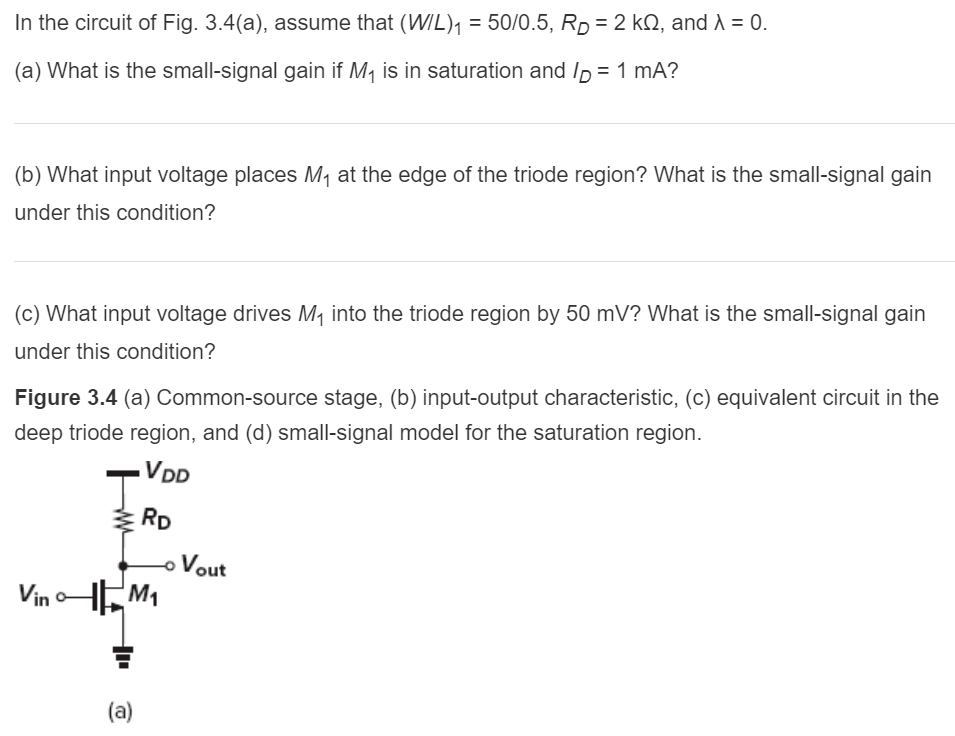In the circuit of Fig. 3.4(a), assume that (W/L)1 = 50/0.5, RD = 2 kΩ and λ = 0. (a) What is the small-signal gain if M1 is in saturation and ID = 1 mA? b) What input voltage places M at the edge of the triode region? What s the small-signal gain under this condition? (c) What input voltage drives M1 into the triode region by 50 mV? What is the small-signal gain under this condition? Figure 3.4 (a) Common-source stage, (b) input-output characteristic, (c) equivalent circuit in the deep triode region, and (d) small-signal model for the saturation region.



You'll get a detailed, step-by-step and expert verified solution.
 Work With Experts to Reach at Correct Answers
Work With Experts to Reach at Correct Answers